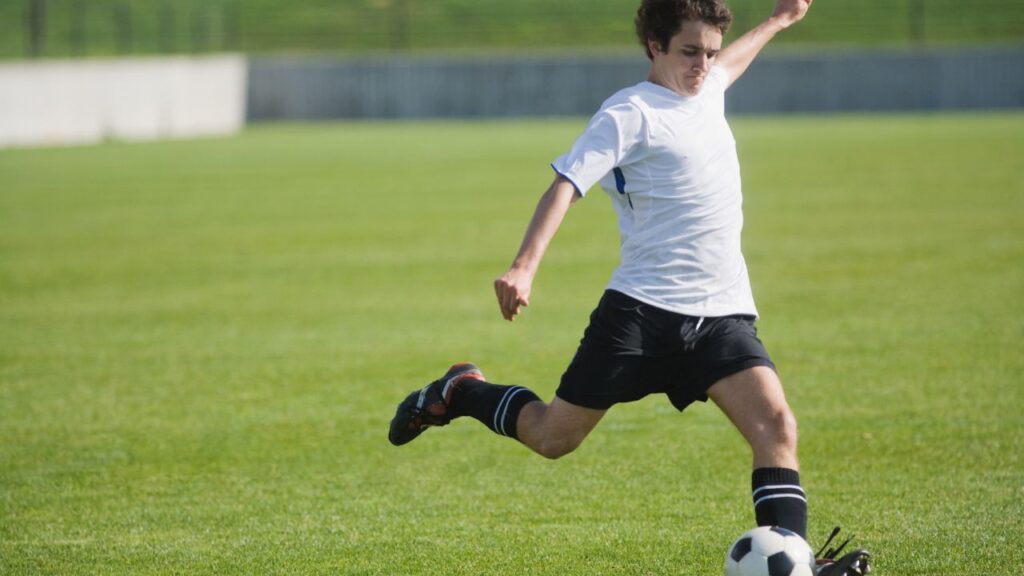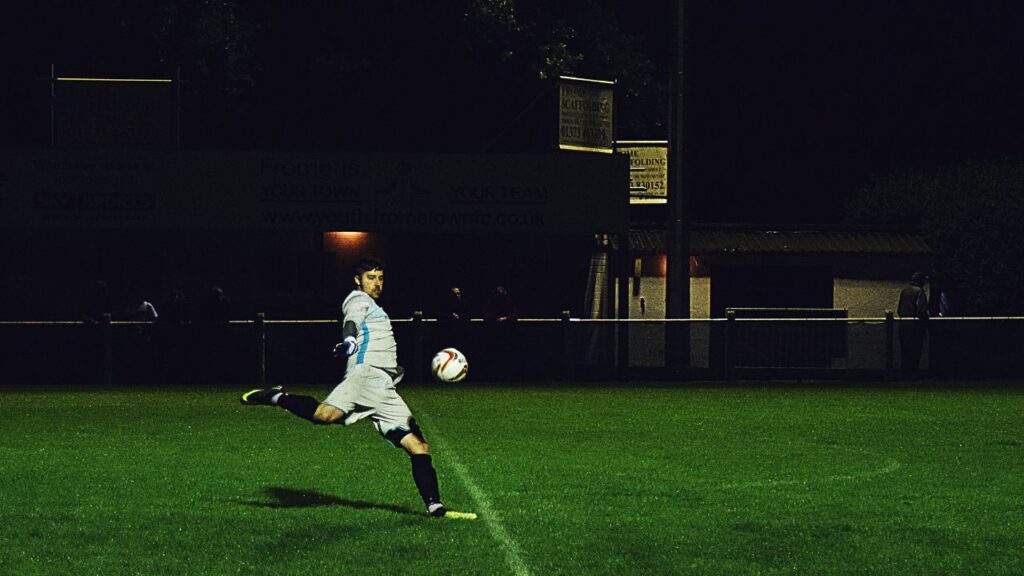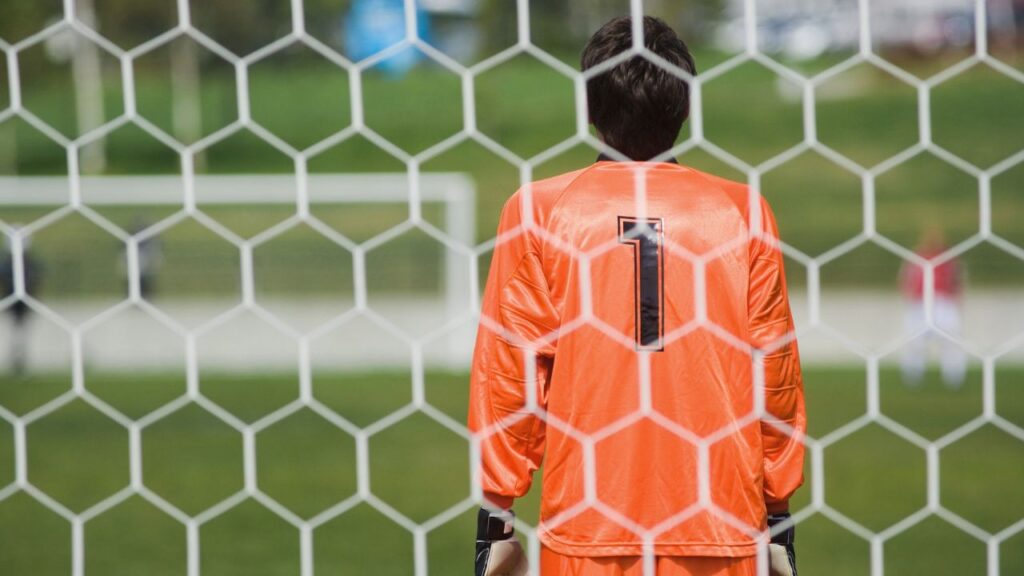Football is more than just a game; it’s a universal language spoken through passion, skill, and camaraderie. Across continents and cultures, it forges connections that transcend borders, politics, and languages. Whether in a bustling city square or a remote village pitch, the roar of the crowd, the thrill of a goal, and the collective heartbeat of fans unite communities with a shared heartbeat. Its influence seeps into culture, economics, and social structure, weaving stories that echo through generations. In 2025, as football continues its meteoric surge globally, powered by technological advances and mega-events, the sport’s role as a cultural glue and social catalyst has never been clearer. From underdog victories to legendary rivalries, football’s narrative is as much about people—their dreams, struggles, and celebrations—as it is about the match itself. This dynamic interplay of passion and culture makes football not just the world’s favorite sport, but an unstoppable force shaping societies and uniting communities worldwide.

Football as a Cultural Icon: How the Beautiful Game Shapes Societies Globally
Football’s cultural imprint stretches far beyond the 90 minutes on the pitch. This sport has embedded itself into societies globally, becoming a symbol of identity, pride, and social cohesion. Across nations, football isn’t merely entertainment; it’s a ritual, a social spectacle capable of knitting communities tight and igniting powerful emotions.
Central to this phenomenon is the way football promotes inclusivity. Picture a dusty pitch in South America where kids from diverse socioeconomic backgrounds flock together, or a city stadium in Europe brimming with an array of supporters in Nike, Adidas, and Puma kits, united in singular passion. It’s here that football operates as an equalizer, bridging class, ethnicity, and even political divides.
Football’s Role in Social Rituals and National Identity
Football has become a cornerstone for many nations’ cultural identity. The sport’s major tournaments, like the FIFA World Cup, act as global festivals where national pride explodes in vibrant displays of color, song, and ritual. These moments forge a shared narrative, where football heroes become national icons and victories echo as chapters of cultural folklore.
Within stadiums and living rooms alike, supporters engage in time-honored traditions—chants, songs, and rituals that invigorate the match atmosphere and solidify fan identity. Outfits produced by Reebok, Umbro, and Kappa become more than apparel; they are badges of honor and cultural signifiers worn with pride. These rituals emphasize community belonging, enhancing the collective joy or anguish experienced in tandem.
Values and Social Norms Fostering Resilience
Soccer instills values that ripple through society, emphasizing teamwork, perseverance, and fair play. Youth academies worldwide nurture these traits, teaching more than just tactical skills. These lessons of resilience and cooperation often shape characters, preparing players and fans alike for life’s challenges. Stories of relentless training, bouncing back from injury, or clutch performance in high-pressure moments offer powerful life metaphors.
Furthermore, the surge of women’s football, amplified by global brands like New Balance and Asics sponsoring top female leagues, sends a clear message challenging gender stereotypes. The rise of female stars on par with their male counterparts creates cultural shifts, encouraging inclusivity and broadening societal perspectives on gender roles.
- Football as a unifier transcending cultural and socioeconomic gaps.
- Rituals and traditions that solidify fan identities and community ties.
- Promotion of core values: teamwork, discipline, resilience.
- Influence in national pride and cultural storytelling.
- Role of women’s football in challenging traditional norms.
| Aspect | Impact on Culture | Example/Case Study |
|---|---|---|
| National Identity | Heightened patriotism during international tournaments. | Brazil 2014 World Cup celebration, iconic flags and chants. |
| Social Inclusion | Football pitches as melting pots of class and ethnicity. | Community leagues in London inclusive of immigrants and locals alike. |
| Gender Equality | Rise of women’s leagues and visibility in mainstream media. | Increased sponsorship deals with Puma and Adidas for women’s teams globally. |

The Economic Power of Football: Fueling Local and Global Economies
Football’s economic reach is staggering and crucial to understanding its global impact. Far from a mere sport, football has become a massive industry generating billions worldwide—from ticket sales and broadcasting rights to sponsorships and merchandise.
Brands like Under Armour, New Balance, and Mitre aren’t just suppliers; they’re stakeholders in football’s global marketplace, shaping both style and commercial trends. Through partnerships with elite clubs and major tournaments, they inject millions into the football economy, fueling growth and innovation.
The Football Industry: Jobs, Revenue, and Urban Development
Professional leagues such as the Premier League, UEFA Champions League, Ligue 1, and MLS attract massive viewership and sponsorship dollars. These leagues are economic engines that spawn thousands of jobs from athletes and coaching staff to sales teams, stadium workers, and media professionals.
Stadiums act as urban hubs, particularly on match days, breathing life into local businesses: pubs, restaurants, hotels, and shops thrive due to the influx of fans and tourists. Cities investing in football infrastructure often see a ripple effect of urban renewal and community development, turning clubs into both economic and social anchors.
Financial Influence of Mega Events and Sponsorships
Events like the FIFA World Cup or the UEFA European Championship provide financial windfalls for host countries through tourism and global exposure. The buzz around these tournaments, amplified by exclusive deals involving Nike, Adidas, and Puma, generates unparalleled commercial opportunities.
Moreover, substantial investments from corporate sponsors underpin club and national team operations. For instance, Reebok’s long-term partnerships with historic clubs or Umbro’s innovative merchandise lines highlight how branding and football are inseparable. This commercial synergy benefits communities through job creation and philanthropic initiatives led by players and brands alike.
- Massive employment opportunities linked to football industry growth.
- Boost to local economies on match days through diverse commerce.
- Revenue generation via broadcasting rights and sponsorships.
- Urban development spurred by stadium and club investments.
- Economic uplift during mega-events attracting tourism and business.
| Economic Sector | Football Impact | Illustration |
|---|---|---|
| Employment | Creation of diverse job roles from players to support staff. | Premier League’s 300,000 direct and indirect jobs linked to clubs. |
| Tourism | Surge in visitors during major tournaments boosting local economies. | Host cities like Munich benefit from influx during 2024 UEFA Finals. |
| Sponsorships | Multi-million dollar deals with global brands enhancing exposure. | Adidas’ partnerships with national teams and grassroots initiatives. |
Football as a Catalyst for Social Change: Bridging Communities and Shaping Values
Football holds a unique power to influence social dynamics, acting as a bridge across divisions and a platform for change. Through its global stage, the sport promotes values of inclusivity, respect, and solidarity, making it a force beyond athletic competition.
From grassroots campaigns to world-renowned players’ activism, football is intertwined with social movements that champion equality and challenge prejudice. Clubs and players often take stands on discrimination and racism, showing how football can be a vehicle for powerful societal messages.
Football’s Role in Promoting Social Justice and Equality
Social initiatives linked to football emphasize community empowerment. Leagues have launched programs combating racism and xenophobia, while players use their celebrity status to highlight social issues. Brand partnerships with Reebok and Under Armour support foundations that channel funds into education and social cohesion projects globally.
The rise of diverse football icons from marginalized backgrounds showcases the sport’s inclusivity. Their stories inspire millions, proving that football’s culture embraces multiculturalism and opportunity. The ongoing fight for equal pay and recognition in women’s football further highlights the game’s transformative potential.
The Power of Football to Unite Rival Factions and Communities
In divided societies, football matches often become rare moments of unity. Rival clubs with distinct cultural or political roots, while fiercely competitive, can still generate mutual respect and dialogue through sport. For example, intense matchups covered in depth at rktfootball.com illustrate how rivalries bring communities together amid shared passions.
Football’s ability to overcome social fractures often extends beyond the pitch. Community football programs offer safe spaces for youth to engage positively, reducing violence and promoting social skills. These grassroots efforts are essential in nurturing cohesive societies where football acts as a social binder.
- Football as a platform for anti-racism and social justice campaigns.
- Empowerment of marginalized groups through football visibility.
- Clubs and brands collaborating on community welfare programs.
- Sport fostering dialogue in divided or conflict-ridden regions.
- Youth football initiatives reducing social exclusion and violence.
| Social Challenge | Football-Driven Solution | Notable Examples |
|---|---|---|
| Racism and Discrimination | Campaigns led by clubs and players, supported by brands. | MLS’ “Kick It Out” and UEFA’s anti-racism initiatives. |
| Community Division | Joint fan events and community matches bridging divides. | Glasgow derby fan peace efforts documented on rktfootball.com. |
| Youth Disengagement | Local football programs providing education and mentorship. | Under Armour-backed youth academies in urban US centres. |
Global Football Trends and the Role of Major Brands in Cultural Fusion
Brands like Nike, Adidas, Puma, and Kappa have become integral to football’s expanding cultural footprint. These companies not only outfit players and fans but influence fashion trends, fan identities, and even community initiatives.
The fusion of football and fashion manifests in everything from streetwear inspired by iconic clubs to eco-conscious collections promoting sustainability. This blending sparks a vibrant cultural dialogue, visible in how fans express themselves through customized kits and accessories.
How Football Brands Shape Fan Culture and Identity
The identity of a supporter often intersects with the gear they wear. Puma’s bold designs or Umbro’s classic lines evoke nostalgia while embracing modern aesthetics, helping fans declare allegiance with style. The rise of limited-edition kits and collaborations with artists have turned football fashion into a global cultural movement.
Brands also champion social causes, aligning with campaigns for equality and environmental stewardship which resonate deeply with global audiences. Their influence extends beyond aesthetics, fostering inclusive communities united by shared passion and values.
Emerging Trends in Global Football and Their Cultural Impact
Football’s globalization manifests through the rise of leagues in Asia, North America, and Africa, bringing new fan cultures and playing styles into the mix. The surge of digital platforms allows fans from diverse backgrounds to connect instantly, sharing traditions and creating hybrid cultures.
Moreover, innovations like eco-friendly kits and community-led initiatives backed by major brands signal a future where football is not just a game but a platform for positive cultural transformation. The increasing popularity of women’s leagues, supported by Adidas and New Balance, is expanding the sport’s inclusivity and cultural reach.
- Football brands as cultural tastemakers influencing fan style.
- Limited-edition kits and artist collaborations expanding cultural expressions.
- Global expansion of leagues introducing diverse football cultures.
- Technology enabling cross-cultural fan engagement and dialogue.
- Shift toward sustainability and social causes in football merchandising.
| Trend | Description | Cultural Impact |
|---|---|---|
| Fashion Collaborations | Partnerships between football clubs, brands, and artists for exclusive gear. | Enhanced fan identity and expression. |
| Global League Growth | Emergence of competitive leagues in new regions. | Diversification of football culture worldwide. |
| Digital Fan Interaction | Online platforms connecting global fans live and interactively. | Shared traditions and broadened cultural dialogue. |
| Eco-conscious Merchandise | Creation of sustainable kits and products. | Promotion of environmental awareness within football. |
- Explore intense rivalries that bind fans worldwide at rktfootball.com.
- Discover how football’s global growth reshapes cultures at rktfootball.com.
- Learn the secrets of football success and fan passion at rktfootball.com.
- Stay updated with top football clubs making waves globally at rktfootball.com.
- Dive into unique football fandom experiences at rktfootball.com.
